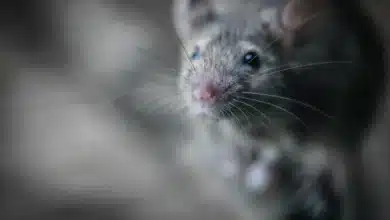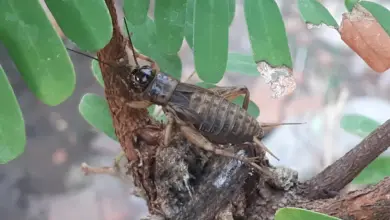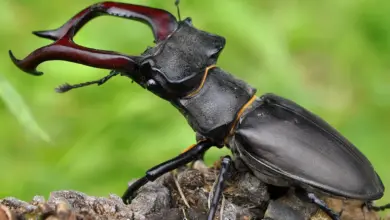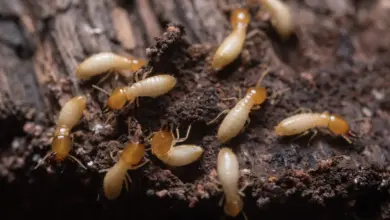Velvet ants, despite their name, are not ants at all. They are actually wasps belonging to the family Mutillidae.
These colorful insects can be found worldwide and are known for their distinct appearance, with the females being wingless and covered in thick, hair-like setae.
The most common velvet ant species is Dasymutilla occidentalis, also known as the cow killer ant. But are these insects dangerous to humans or dogs?
[ez-toc]
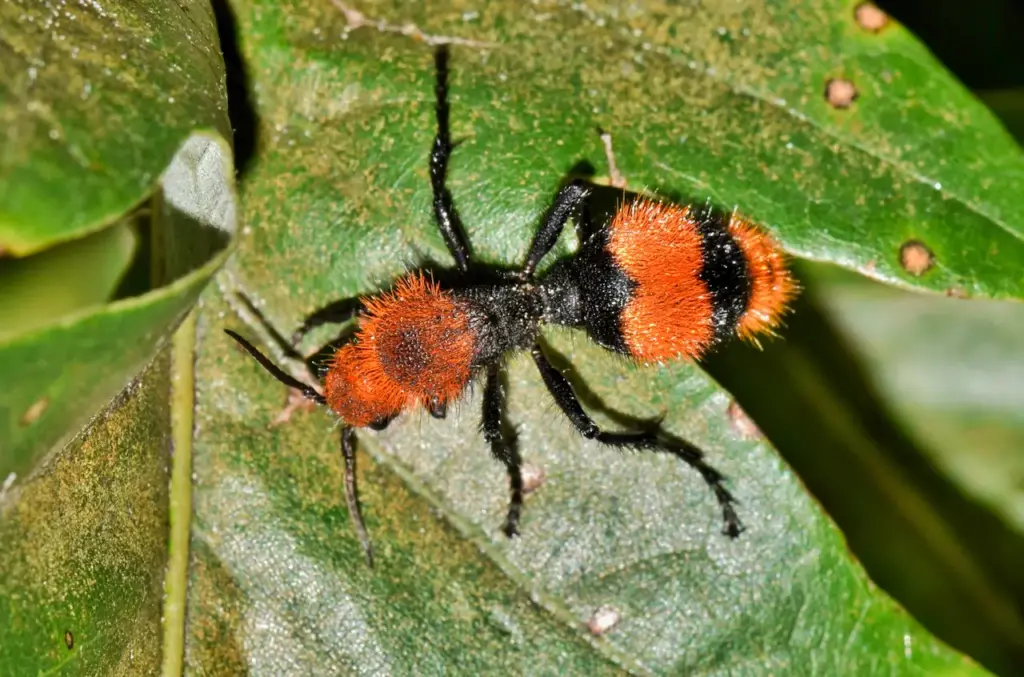
While velvet ants are equipped with a powerful sting, they are generally not aggressive creatures.
However, they will use their sting if they feel threatened or accidentally stepped on.
The sting is known to be quite painful and can cause allergic reactions in some individuals, but it is typically not life-threatening.
As for dogs, the potential danger is essentially the same as it is for humans.
If a curious canine were to disturb a velvet ant, the insect might deliver a painful sting in defense, but it is not likely to pose a serious threat to the dog’s overall health.
What Are Velvet Ants
Appearance
Velvet ants, often known as cow killers, are not actually ants but wasps.
They are wingless and covered with dense, velvety hair, usually displaying vibrant colors such as bright orange or red.
This unique appearance serves as a warning to potential predators.
Mutillidae Family
These insects belong to the family Mutillidae within the wasp family and can be found worldwide.
There are various species and several genera of velvet ants – the most common one in the United States is the eastern velvet ant (Dasymutilla occidentalis).
Males vs Females
Male and female velvet ants have noticeable differences:
- Males have wings, while females are wingless
- Females are slightly larger, reaching about 3/4 inch in length
Here is a comparison table:
| Males | Females | |
|---|---|---|
| Wings | Yes | No |
| Size | Smaller | Larger |
To sum up, velvet ants are wasps known for their bright colors and velvety hair.
They belong to the Mutillidae family and display sexual dimorphism, with females being wingless and larger than males.
Are Velvet Ants Dangerous to Humans and Dogs?
Sting and Venom
Velvet ants, also known as cow killer ants, are actually solitary wasps. They can potentially pose a risk to humans and dogs, particularly due to their sting and venom.
-
Sting: Despite their name, velvet ants do not have a painful bite like fire ants. Instead, females possess a painful sting comparable to that of a wasp. Males lack a stinger.
-
Venom: Velvet ants’ venom is potent enough to cause severe pain, and in some cases, can even lead to an allergic reaction.
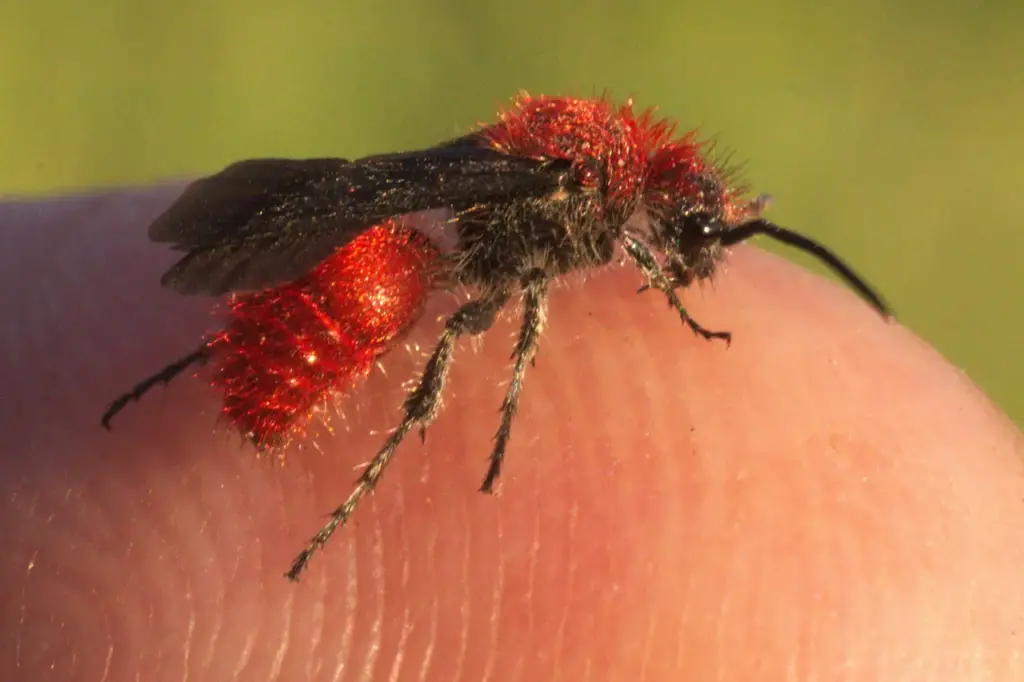
Symptoms in Humans
Here are some common symptoms experienced by humans after a velvet ant sting:
- Intense pain at the sting site
- Redness and swelling
- Itchiness and hives
- Allergic reactions ranging from mild to severe, with the potential of anaphylactic shock in extreme cases
If stung by a velvet ant, it is important to seek medical attention if symptoms worsen.
Basic treatment at home can include applying a cold compress and taking over-the-counter medication to reduce pain and swelling.
Effects on Dogs
Dogs may also be at risk when encountering velvet ants in gardens and other outdoor areas. Symptoms in dogs include:
- Whining and chewing or licking the sting site
- Swelling and redness
- Possible infection if not treated
If your dog is stung by a velvet ant, it’s recommended to consult a veterinarian for appropriate treatment, especially if symptoms worsen or persist.
In both cases, it’s best to leave velvet ants alone and avoid direct contact.
Wearing shoes, gloves, and paying attention to your surroundings while outdoors can help prevent stings.
Remember that despite their bright colors and apparent danger, velvet ants are solitary insects and not aggressive unless directly provoked.
They play a valuable role in controlling the population of other insects, as they feed on nectar from flowers and parasitize the larvae of ground-nesting bees and wasps.
So, while it’s essential to be cautious, keep in mind that velvet ants are also a beneficial part of our ecosystem.
Habitat and Behavior
Where Velvet Ants Live
Velvet ants, which are actually wasps, can be found in various habitats across the eastern United States, from Connecticut to Florida1.
They typically reside in open areas such as grassy meadows2.
- Favorable habitats: grassy meadows, open areas
- Geographic range: eastern United States (Connecticut to Florida)
Diet and Feeding Habits
Velvet ants feed on nectar from flowers as adults3. They are parasites that primarily target ground-nesting bees, wasps, and sometimes flies and beetles4.
- Primary food source: nectar from flowers
- Parasitic target: ground-nesting bees, wasps, flies, and beetles
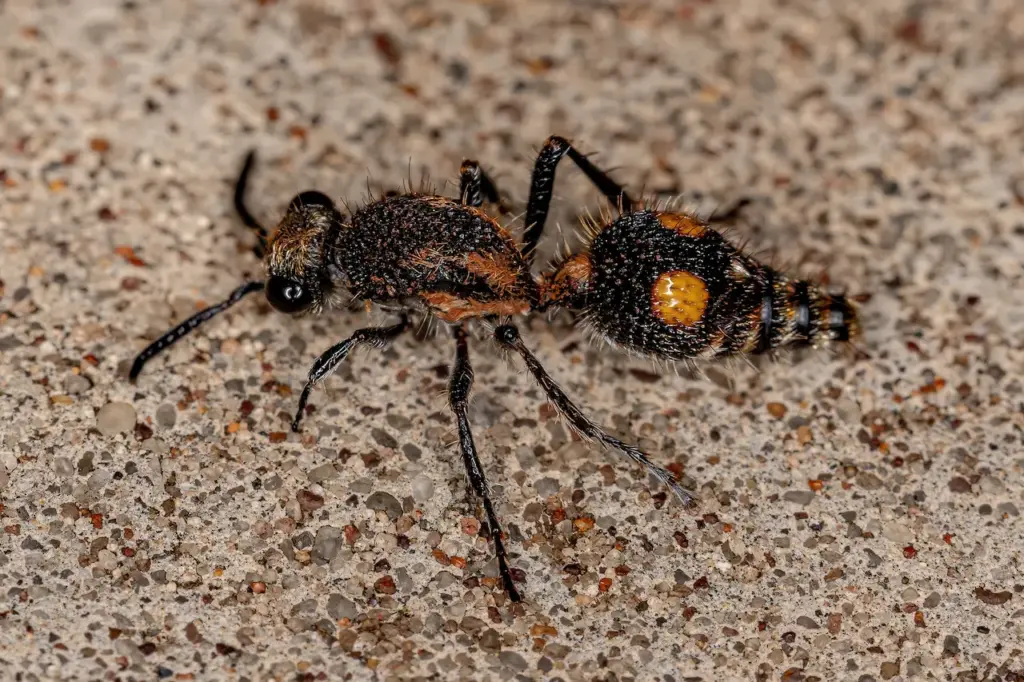
Defense Mechanisms
Velvet ants are known for their aposematic coloration, which is a bright and vibrant warning coloration that signals potential predators to stay away5.
Additionally, they possess painful stings, and their venom is composed mainly of peptides6.
- Aposematic coloration: bright, warning colors
- Potent stings: venom contains peptides
Reproduction
Female velvet ants lay their eggs individually upon the immature stages of their host insects7. The eggs develop at the host’s expense, ultimately killing it8.
- Reproduction strategy: parasitism
- Host impact: eventual death
Common Misconceptions
Cow Killer Ants
One common misconception is that velvet ants, also known as “cow killer ants,” can kill cows. In reality, velvet ants are not ants but wasps belonging to the family Mutillidae.
The name “cow killer ant” likely arises from their painful sting, which can feel like a cow kick to unsuspecting victims – humans and animals alike. However, these wasps are not deadly to cows.
Some features of the velvet ant:
- Bright colors
- Thick, hair-like coating
- Female: wingless and ant-like
Danger to Cows
Though the sting of a velvet ant can be extremely painful, it poses no substantial risk to cows.
People and animals might experience temporary pain or discomfort, but their stings are not powerful enough to kill a cow.
Cows might accidentally step on a velvet ant, but the repercussions are not lethal. It’s important to mitigate fear surrounding these creatures based on their nickname.
A comparison of velvet ant misconception vs reality:
| Misconception | Reality |
|---|---|
| Can kill cows | Does not have the power to kill cows |
| Is an ant | Is a type of wasp |
| Dangerous to humans and dogs | Only potentially causes pain and discomfort |
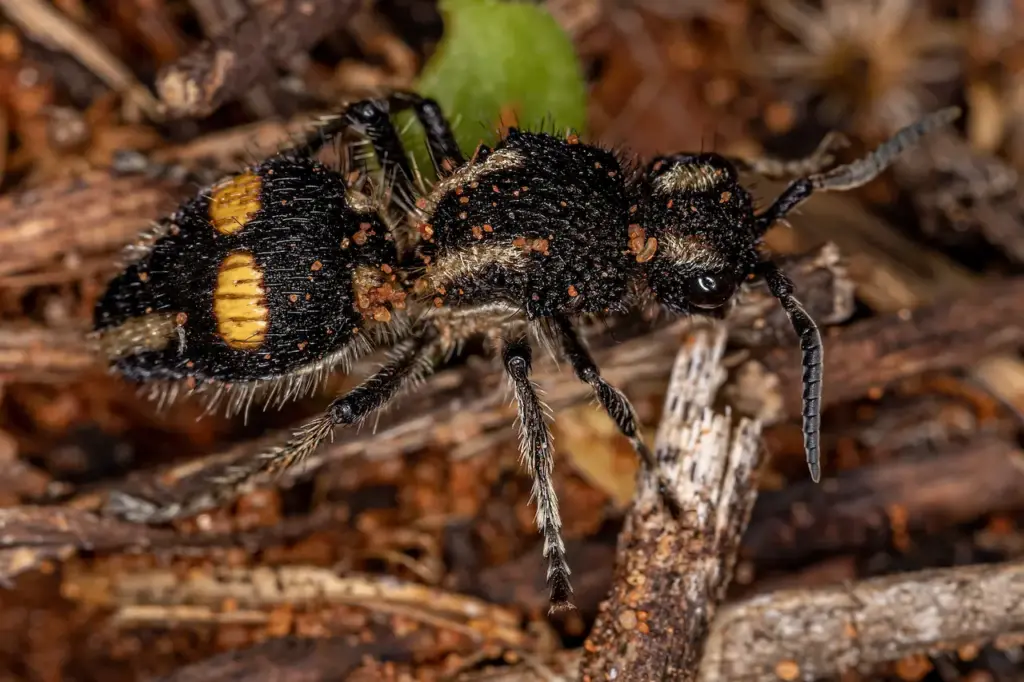
Gender Differences
Understanding the gender differences in velvet ants can help clarify misconceptions about their danger or threat level.
Male velvet ants have wings, while female velvet ants are wingless and covered in dense hair, resembling ants.
Females are more easily noticed as they are larger and often scurry on the ground, while males are usually seen when feeding.
Despite these differences, neither males nor females pose a significant danger to cows, humans, or dogs.
Conclusion
Velvet ants, despite their name, are actually wasps. They’re known for their striking appearance and painful sting.
Female velvet ants lack wings and are covered in dense, colorful hairs.
While they can deliver a painful sting if provoked, they are not typically aggressive towards humans.
Their sting can be particularly intense, earning them the nickname “cow killer” due to the perceived potency of their venom.
However, they’re not usually considered dangerous unless you have an allergic reaction.
